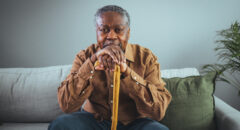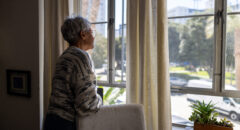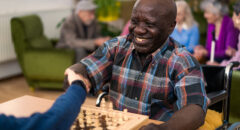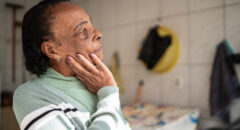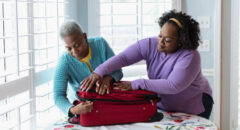
Imagine navigating a maze of bright lights, loud noises, and hidden trip hazards every day. For a person with Alzheimer’s, this can be a daily reality, fraught with discomfort and danger. The Alzheimer’s Foundation of America (AFA) highlights that with just a few simple tweaks, you can transform this daunting maze into a safe and comforting haven for those living with dementia.
Understanding the Need for a Dementia-Friendly Home
Jennifer Reeder, AFA’s director of educational and social services, highlights the importance of adapting the home environment to meet the specific needs of someone with Alzheimer’s. “Every family caregiver’s number one priority is making sure their loved one is safe, but most homes are not designed with the needs of someone living with dementia in mind,” Reeder notes. By incorporating smart technology and making small changes, you can create a safer, more supportive living space.
Practical Tips for a Safer Home
Here are three actionable tips if you are a caregiver to enhance home safety for your loved ones with Alzheimer’s:
1. Embrace Smart Technology
Modern technology offers various tools that can significantly enhance safety and ease for people with dementia:
- Smoke and Carbon Monoxide Detectors: Traditional high-pitched alarms can be unsettling for someone with Alzheimer’s. Opt for models that allow the alarm sound to be replaced with a calming human voice, which can inform residents of issues more gently. This simple switch can prevent unnecessary distress while ensuring safety.
- App-Controlled Thermostats: These devices enable caregivers to monitor and adjust home temperatures remotely, ensuring the environment remains comfortable. Maintaining a stable temperature can prevent discomfort and potential health issues related to being too hot or cold.
- Video Doorbells: These provide real-time monitoring of who is approaching or leaving the home. They also allow for two-way communication, which can be very useful for caregivers who need to communicate with visitors or delivery personnel without disturbing their loved ones.
- Automatic Fire Extinguishers: Install devices under range hoods that dispense baking soda automatically in the event of a fire. This quick response can prevent a minor incident from becoming a major disaster, providing peace of mind and ensuring kitchen safety.
RELATED: Alzheimer’s vs. Other Dementias: What’s the Difference?
2. Minimize Fall Risks
Falls can have severe consequences, especially for older adults with Alzheimer’s. Simple adjustments can greatly reduce these risks and make your home a safer place:
- Cover Sharp Edges: Use rubber corner protectors on furniture and countertops to prevent injuries from falls. Sharp corners can cause significant injuries, especially during a fall, so covering these can help mitigate some risks.
- Install Night Lights: Floor-level night lights can guide individuals through hallways and bathrooms, reducing the chance of falls in low-light conditions. These lights provide enough illumination to navigate safely without being overly bright or startling.
- Add Grab Bars: Place grab bars in showers and near toilets to provide additional support. These bars offer stability and can help prevent falls in slippery areas like bathrooms.
- Reduce Clutter: A clutter-free environment minimizes tripping hazards. Remove unnecessary items from walkways and common areas to ensure clear paths throughout the home.
- Choose Safe Rugs: Avoid throw rugs that can slip or bunch up. Instead, use anti-slip rubber-backed mats, especially in bathrooms. These mats provide a safer alternative and should only be used when necessary to further minimize risks.
3. Optimize Color and Lighting
Dementia can impair vision and depth perception, making it crucial to consider color contrast and lighting in the home:
- Use Contrasting Colors: Decorate with contrasting colors to help with vision, depth perception, and spatial orientation. For example, use different colors for walls and floors or for door frames and doors. This visual differentiation helps individuals navigate their environment more easily.
- Reduce Glare: Opt for lighting that minimizes glare, as harsh light can further impair vision. Soft, diffused lighting is often more comfortable and safer, reducing the strain on the eyes and making it easier to move around safely.
Enhancing Quality of Life
By making technology your ally, reducing fall risks, and carefully considering color and lighting, you can create a home environment that is both safer and more comfortable for your loved ones living with Alzheimer’s, ensuring that your home remains a haven rather than a hazard.
You should also consider regular assessments of the home environment as the needs of a person with Alzheimer’s can change over time. This proactive approach ensures that your home continues to meet their needs, providing a stable and supportive environment as the condition progresses.
Additionally, engaging with support groups and educational resources provided by organizations like the AFA can offer further guidance so that you can provide the best possible care.

